Mold Toxicity, Mold Illness, and Chronic Symptoms
How To Test and Address Mold Toxicity and Mold Illness
- What Is Mold Toxicity?|
- Symptoms|
- Mycotoxin Health Effects|
- Is Mold Illness Real?|
- What To Do About Mold Toxicity|
- About Mold Testing|
- Indoor Mold Testing|
- Mycotoxin Testing|
- Mold Illness Treatment|
- The Bottom Line|
- Recommended Products|
Download this Episode (right click link and ‘Save As’)
If you have multiple chronic symptoms, you may have wondered if mold toxicity — an illness caused by mold and mold toxins — is the cause. Chronic fatigue symptoms, autoimmunity, and allergic symptoms are often attributed to mold or water damaged buildings. But is mold toxicity really to blame?
Toxic mold can definitely cause a wide range of symptoms, but medical researchers don’t agree about its role in complex illness.
In this article, we’ll explore what mold toxicity is and what kinds of health issues it can cause. We’ll discuss whether mold toxicity is real, and we’ll talk about what to do if you suspect you have mold illness, including testing and mold illness treatment.

What Is Mold Toxicity?
Mold toxicity is illness caused by exposure to mold spores and mold biotoxins. As the word implies, biotoxins are toxic substances made by biological organisms, like molds or bacteria.
Mold toxicity is widely recognized as a cause of symptoms or illness in animals and people from exposure to moldy foods [1, 2] but has also come to suggest illness caused by mold growth in water-damaged buildings.
However, whether people can become chronically ill from long-term exposure to airborne mold particulates (small pieces of mold) and biotoxins indoors is controversial [3].
Symptoms of Mold Exposure, Mycotoxins, and Mold Illness
Respiratory symptoms, like sinus trouble, are well documented in people who have experienced indoor airborne mold exposure and mold allergies [4, 5]. And symptoms of mycotoxin (biotoxins produced by molds) exposure from mold in foods is also well validated in studies [6]. But some evidence suggests long-term exposure to airborne mold and mycotoxins can cause more systemic health problems and health conditions [7]. Mold exposure symptoms may include:
- Respiratory symptoms such as sinusitis, asthma, wheezing, runny nose, sneezing, shortness of breath, swollen nasal passages, and chronic upper respiratory tract problems [8, 9, 10]
- Allergy symptoms [9] or allergic reactions
- Neurological symptoms, such as memory loss, brain fog, executive function disorders, depression, vision changes, and even autism spectrum disorder [11, 12, 13, 14, 15, 16].
- Chronic fatigue [17, 18]
- Digestive symptoms such as nausea, abdominal pain, diarrhea, or vomiting [1, 19]
- Inflammation [20]
A minority of people may have a hypersensitivity to molds and mycotoxins, termed Chronic Inflammatory Response Syndrome (CIRS) by Dr. Ritchie Shoemaker.
Health Effects of Mycotoxins
Mold can cause irritating symptoms, but mold toxins — called mycotoxins — are often the bigger problem.
Not all types of molds produce mycotoxins, but many do, including common household molds like Aspergillus, Penicillium, and Stachybotrys chartarum (black mold) [7]. Fungal mycotoxins have been shown to cause adverse human health effects [21], may behave as allergens, and some types can be more toxic than industrial toxins [22].
Consider these examples:
- A mycotoxin called trichothecene, released by mold species such as Stachybotrys chartarum, has been shown to disrupt the immune system, nervous system, and hormone and energy production [19].
- A clinical trial found that inhalation of Beta-D-glucans, a mycotoxin, produced a significant increase in inflammatory markers [23].
- Mycotoxins in foods have been shown to cause digestive system effects, such as shrinkage of the intestinal villi, changes in the gut microbiome, and hormone imbalances, and are associated with some digestive system cancers [1].
- A clinical study found that mold-exposed people had decreases in neurological function on assessments compared to controls [24]. These included changes in reaction times, grip strength, memory, and impaired vision.
- And a series of cases of pediatric lung hemorrhage were associated with mycotoxin exposure from water-damaged homes [8].

Is Illness From Mold Exposure Real?
Researchers are trying to clarify the health effects of exposure to mold and mycotoxins. According to an article in the Environmental Health Perspectives journal, “…many of the puzzle pieces — exactly who is vulnerable, to what extent, and under what conditions — are still missing. The vast information gaps that remain continue to feed significant controversy…” [25]
A 10-year longitudinal study showed a positive association between chronic mold exposure, inflammation, and “sick building syndrome” (illness caused by exposure building they live or work in) [20]. Studies suggest mold and mycotoxin exposure increases a systemic inflammatory response [26], which generally has been shown to contribute to health problems such as heart disease and gum disease [27, 28, 29, 30, 31].
However, there isn’t yet strong evidence to support this hypothesis or to confirm how systemic mold illness works [10, 32].
But despite all this controversy, many people do seem to become ill from mold exposure in moldy buildings and appear to improve when treated for mold illness. The challenge we need to meet is to determine who truly needs mold illness treatment.
What To Do About Suspected Mold Illness
Pursuing a mold illness diagnosis can give you false leads in your quest for healing. It’s important to enter the world of mold testing and treatment cautiously. Pursuing unproven tests and treatment may be wasteful of your money, and delay your appropriate diagnosis.
What we’ve noticed in the clinic is that symptoms that patients think may be related to mold are often coming from a different root cause, like the gut, a thyroid imbalance, or hormone trouble.
So before you dive down the mold rabbit hole, we first need to determine if you’re a good candidate for mold investigation.
You should consider investigating mold and mycotoxin illness if:
- You have already changed your diet and lifestyle and worked on healing your gut, but are still not feeling well;
- You are experiencing symptoms or health effects consistent with mold toxicity, and;
- You have access to experienced, trusted, and rational medical advice to help you. This is not a do-it-yourself proposition.
If you meet these criteria, testing your home and body for mold exposure may be worth your time and provide you with a useful strategy for symptom improvement.
About Mold and Mycotoxin Testing
Mold and mycotoxin lab tests can help define a mold illness problem but need to be used carefully. As you choose how to move forward with your case, be aware of the following:
- Mold and mycotoxin testing is a new technology without much data. This doesn’t mean testing can’t be useful, but it needs to be interpreted by knowledgeable practitioners who know what they’re doing.
- Mold can be a red herring. Just because mold or mycotoxins show up on a test result doesn’t mean they are the cause of your symptoms. If not interpreted correctly, this can distract you from your true root causes.
- Mold illness is complex. Testing may not provide you with clear answers or a road map to ideal treatment.
With that said, let’s discuss the mold testing options.
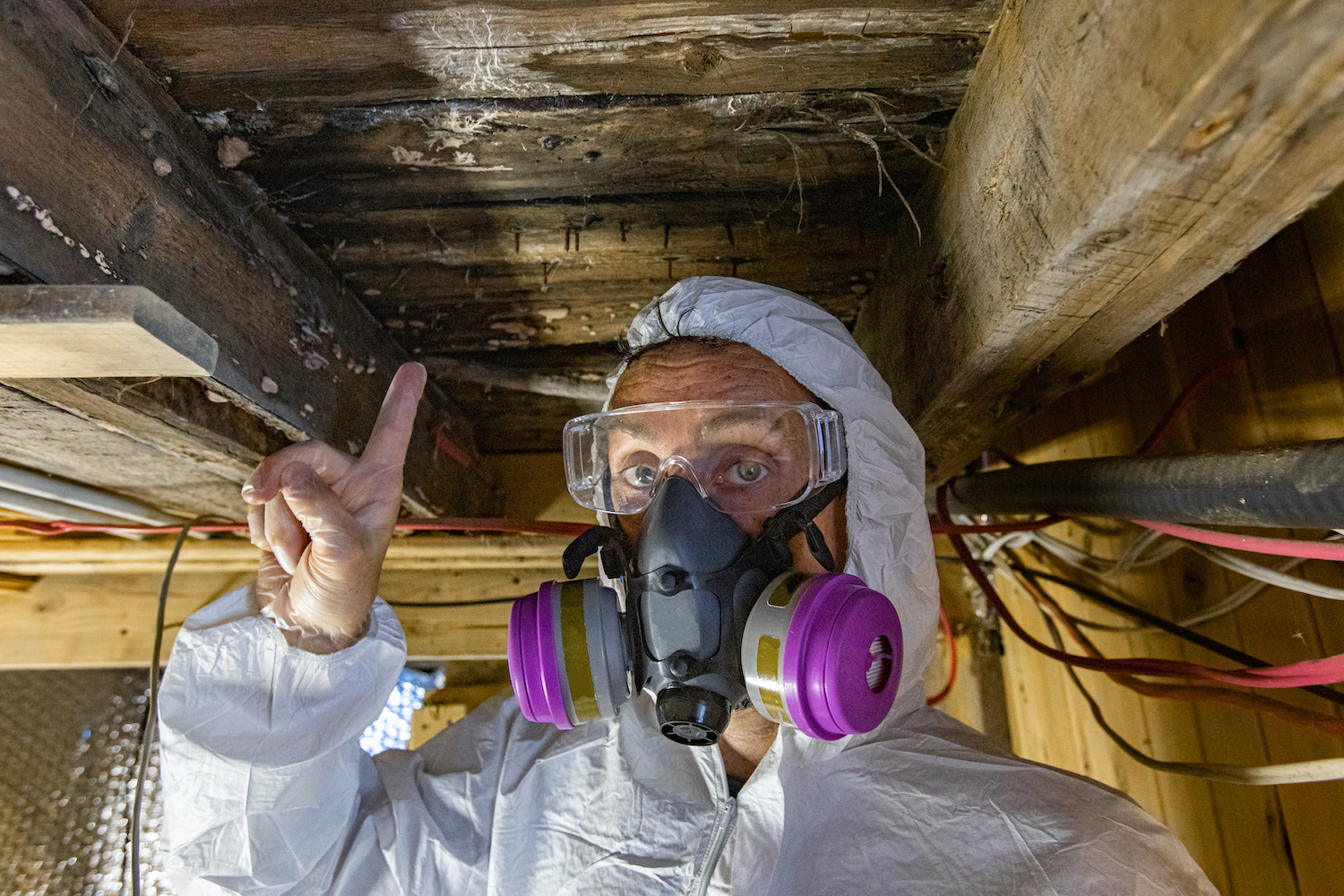
Indoor Mold Testing
Mold illness is almost always caused by exposure to mold in your home or workplace. (Food mold exposures are usually short-lived.)
The best way to assess your indoor air quality for a mold problem is to work with an indoor environmental professional (IEP). An indoor air specialist will look for evidence of visible mold or less obvious signs of mold and water damage, leaks, or dampness on drywall, ceiling tiles, flooring, and more. Common problem areas are bathrooms, laundry rooms, air conditioning units, basements, and attics.
An IEP may test air and dust samples for molds and mycotoxins. You can also run your own indoor mold testing. The indoor air quality mold test with the best data to support it is the Environmental Relative Moldiness Index (ERMI) [33, 34, 35, 36]. Hardware store home mold tests are not accurate, and should be avoided.
Mycotoxin Testing
You can also assess your body for mold and mycotoxin exposure.
The Visual Contrast Sensitivity test (VCS) measures changes in your ability to discern contrast between black, white, and gray objects on your computer screen. If positive, the VCS test indicates you may have been exposed to mold or mycotoxins [37]. This test is very inexpensive and can be a cheap screening test to take before moving on to more expensive options.
Urine mycotoxin testing looks for mycotoxin metabolites in your urine. Some studies have shown that people who are exposed to mold or have mold toxicity symptoms excrete indicators of mycotoxins in their urine [38, 39]. However, results may not correlate with current mold exposure [3, 40] and may also be influenced by mold in your diet, lifestyle habits, supplements, and other factors. This testing is challenging to interpret and is best completed with a mold-literate practitioner.
Blood tests for mycotoxin antibodies look for elevated IgG antibodies to mycotoxins. This test is useful for evaluating the current effects of mold and mycotoxins on your body. This test should also be used with a mold-literate practitioner.
For best results, find a knowledgeable health care practitioner to help you. Mold specialists are often functional medicine and naturopathic doctors.
Mold Illness Treatment
There are two main parts to mold illness treatment [41]:
- Remove mold exposure
- Support your body in detoxifying mold and mycotoxins
If a source of mold is found in your home or workplace, you will either need to remove yourself from the moldy environment or complete mold remediation of some kind. An indoor air specialist or mold clean up expert can help you plan your project.
Once you’ve handled the mold exposure, you need to help your body detox from the mold and mycotoxins.
Supporting your gut health is generally considered by mold-literate healthcare practitioners to be a key part of this process and needs to be handled before moving on to more involved detoxification.
Heal the Gut, then Detox

A healthy gut microbiome binds mycotoxins for stool excretion [1]. Imbalances in the gut microbiome may compromise your ability to excrete mycotoxins.
We can cautiously infer that probiotic supplementation may support mold and mycotoxin detoxification, based on limited animal study data showing that probiotic supplementation can improve excretion of mycotoxins [42, 43, 44].
Once your gut and detox functions are working well, mold practitioners use medications called binders, such as cholestyramine nasal spray, to help further bind mycotoxins for excretion from your body as well as antioxidants, such as vitamin A, C, and E, and glutathione to support the body’s healing [41]. Symptom relief with antihistamines may also be helpful.
Because there isn’t yet much clinical data to back common mold illness treatments, be willing to be flexible with your approach and adapt your strategy if what you’re doing doesn’t seem to be working.
The Bottom Line About Mold Toxicity
Mold toxicity and mold illness are a new area of study without a lot of supporting research, but some evidence suggests it is real and can be treated. Though mold toxicity may be a cause of your symptoms, it’s vitally important to work with skilled and knowledgeable practitioners and indoor environmental specialists who can accurately assess you and your home or workplace for mold.
If you truly have indicators of mold illness, removing mold exposure and supporting your body’s ability to detox will help you recover your health.
Sponsored Resources
Hey there, Erin here from the Dr. Ruscio team. Can I tell you how excited I am that our brand new three in one probiotic formula is now available on our website store. It’s an easy to use powder stick format.
So I’ve been taking Dr. Ruscio’s recommended three for balanced probiotic for two years. Now I seem to take my soil-based probiotic just fine, because it’s right there next to my other supplements. But man, am I lazy about taking all three each day? The barrier for me is literally just walking over to the fridge and uncapping the other two bottles. I know it’s not hard, but that’s how busy and distracted life can be I guess.
With this three in one formula, you mix one stick with your favorite cold beverage, one to two times per day. It’s tasteless, so it won’t ruin your favorite drink. Take it with, or without food. It’s really useful as a part of your gut support and healing program and it can be used for ongoing immune and gut health maintenance. No pills, just poor mix and drink. Visit store.drruscio.com and order now.
➕ References
- Liew WP, Mohd-Redzwan S. Mycotoxin: Its Impact on Gut Health and Microbiota. Front Cell Infect Microbiol. 2018 Feb 26;8:60. doi: 10.3389/fcimb.2018.00060. PMID: 29535978; PMCID: PMC5834427.
- Milićević DR, Skrinjar M, Baltić T. Real and perceived risks for mycotoxin contamination in foods and feeds: challenges for food safety control. Toxins (Basel). 2010 Apr;2(4):572-92. doi: 10.3390/toxins2040572. Epub 2010 Apr 1. PMID: 22069600; PMCID: PMC3153222.
- Chang C, Gershwin ME. The Myth of Mycotoxins and Mold Injury. Clin Rev Allergy Immunol. 2019 Dec;57(3):449-455. doi: 10.1007/s12016-019-08767-4. PMID: 31608429.
- https://web.archive.org/web/20140415035513/http://www.health.state.mn.us/divs/eh/indoorair/mold/
- Pizzorno J. Is Mold Toxicity Really a Problem for Our Patients? Part I-Respiratory Conditions. Integr Med (Encinitas). 2016 Apr;15(2):6-10. PMID: 27330483; PMCID: PMC4898283.
- Milićević DR, Skrinjar M, Baltić T. Real and perceived risks for mycotoxin contamination in foods and feeds: challenges for food safety control. Toxins (Basel). 2010 Apr;2(4):572-92. doi: 10.3390/toxins2040572. Epub 2010 Apr 1. PMID: 22069600; PMCID: PMC3153222.
- Pizzorno J, Shippy A. Is Mold Toxicity Really a Problem for Our Patients? Part 2-Nonrespiratory Conditions. Integr Med (Encinitas). 2016 Jun;15(3):8-14. PMID: 27547160; PMCID: PMC4982651.
- Etzel RA, Montaña E, Sorenson WG, Kullman GJ, Allan TM, Dearborn DG, Olson DR, Jarvis BB, Miller JD. Acute pulmonary hemorrhage in infants associated with exposure to Stachybotrys atra and other fungi. Arch Pediatr Adolesc Med. 1998 Aug;152(8):757-62. doi: 10.1001/archpedi.152.8.757. Erratum in: Arch Pediatr Adolesc Med 1998 Nov;152(11):1055. PMID: 9701134.
- Gray MR, Thrasher JD, Crago R, Madison RA, Arnold L, Campbell AW, Vojdani A. Mixed mold mycotoxicosis: immunological changes in humans following exposure in water-damaged buildings. Arch Environ Health. 2003 Jul;58(7):410-20. doi: 10.1080/00039896.2003.11879142. PMID: 15143854.
- Garrett MH, Rayment PR, Hooper MA, Abramson MJ, Hooper BM. Indoor airborne fungal spores, house dampness and associations with environmental factors and respiratory health in children. Clin Exp Allergy. 1998 Apr;28(4):459-67. doi: 10.1046/j.1365-2222.1998.00255.x. PMID: 9641573.
- Brown GC. The endotoxin hypothesis of neurodegeneration. J Neuroinflammation. 2019 Sep 13;16(1):180. doi: 10.1186/s12974-019-1564-7. PMID: 31519175; PMCID: PMC6744684.
- Baldo JV, Ahmad L, Ruff R. Neuropsychological performance of patients following mold exposure. Appl Neuropsychol. 2002;9(4):193-202. doi: 10.1207/S15324826AN0904_1. PMID: 12584073.
- Crago BR, Gray MR, Nelson LA, Davis M, Arnold L, Thrasher JD. Psychological, neuropsychological, and electrocortical effects of mixed mold exposure. Arch Environ Health. 2003 Aug;58(8):452-63. doi: 10.3200/AEOH.58.8.452-463. PMID: 15259424.
- Ratnaseelan AM, Tsilioni I, Theoharides TC. Effects of Mycotoxins on Neuropsychiatric Symptoms and Immune Processes. Clin Ther. 2018 Jun;40(6):903-917. doi: 10.1016/j.clinthera.2018.05.004. Epub 2018 Jun 5. PMID: 29880330.
- Purzycki CB, Shain DH. Fungal toxins and multiple sclerosis: a compelling connection. Brain Res Bull. 2010 Apr 29;82(1-2):4-6. doi: 10.1016/j.brainresbull.2010.02.012. Epub 2010 Mar 7. PMID: 20214953.
- Rea WJ, Didriksen N, Simon TR, Pan Y, Fenyves EJ, Griffiths B. Effects of toxic exposure to molds and mycotoxins in building-related illnesses. Arch Environ Health. 2003 Jul;58(7):399-405. doi: 10.1080/00039896.2003.11879140. PMID: 15143852.
- Gunn SR, Gunn GG, Mueller FW. Reversal of Refractory Ulcerative Colitis and Severe Chronic Fatigue Syndrome Symptoms Arising from Immune Disturbance in an HLA-DR/DQ Genetically Susceptible Individual with Multiple Biotoxin Exposures. Am J Case Rep. 2016 May 11;17:320-5. doi: 10.12659/ajcr.896949. PMID: 27165859; PMCID: PMC4913732.
- Brewer JH, Thrasher JD, Straus DC, Madison RA, Hooper D. Detection of mycotoxins in patients with chronic fatigue syndrome. Toxins (Basel). 2013 Apr 11;5(4):605-17. doi: 10.3390/toxins5040605. PMID: 23580077; PMCID: PMC3705282.
- Lebrun B, Tardivel C, Félix B, Abysique A, Troadec JD, Gaigé S, Dallaporta M. Dysregulation of energy balance by trichothecene mycotoxins: Mechanisms and prospects. Neurotoxicology. 2015 Jul;49:15-27. doi: 10.1016/j.neuro.2015.04.009. Epub 2015 May 6. PMID: 25956358.
- Zhang X, Sahlberg B, Wieslander G, Janson C, Gislason T, Norback D. Dampness and moulds in workplace buildings: associations with incidence and remission of sick building syndrome (SBS) and biomarkers of inflammation in a 10 year follow-up study. Sci Total Environ. 2012 Jul 15;430:75-81. doi: 10.1016/j.scitotenv.2012.04.040. Epub 2012 May 24. PMID: 22634552.
- Jarvis BB. Chemistry and toxicology of molds isolated from water-damaged buildings. Adv Exp Med Biol. 2002;504:43-52. doi: 10.1007/978-1-4615-0629-4_5. PMID: 11922098.
- Inamdar AA, Zaman T, Morath SU, Pu DC, Bennett JW. Drosophila melanogaster as a model to characterize fungal volatile organic compounds. Environ Toxicol. 2014 May;29(7):829-36. doi: 10.1002/tox.21825. Epub 2012 Nov 9. PMID: 23139201.
- Beijer L, Thorn J, Rylander R. Effects after inhalation of (1–>3)-beta-D-glucan and relation to mould exposure in the home. Mediators Inflamm. 2002 Jun;11(3):149-53. doi: 10.1080/09622935020138181. PMID: 12137243; PMCID: PMC1781656.
- Kilburn KH. Neurobehavioral and pulmonary impairment in 105 adults with indoor exposure to molds compared to 100 exposed to chemicals. Toxicol Ind Health. 2009 Oct-Nov;25(9-10):681-92. doi: 10.1177/0748233709348390. Epub 2009 Sep 30. PMID: 19793776.
- Weinhold B. A spreading concern: inhalational health effects of mold. Environ Health Perspect. 2007 Jun;115(6):A300-5. doi: 10.1289/ehp.115-a300. PMID: 17589582; PMCID: PMC1892134.
- Kuhn DM, Ghannoum MA. Indoor mold, toxigenic fungi, and Stachybotrys chartarum: infectious disease perspective. Clin Microbiol Rev. 2003 Jan;16(1):144-72. doi: 10.1128/cmr.16.1.144-172.2003. PMID: 12525430; PMCID: PMC145304.
- Zhang YZ, Li YY. Inflammatory bowel disease: pathogenesis. World J Gastroenterol. 2014 Jan 7;20(1):91-9. doi: 10.3748/wjg.v20.i1.91. PMID: 24415861; PMCID: PMC3886036.
- Coates LC, FitzGerald O, Helliwell PS, Paul C. Psoriasis, psoriatic arthritis, and rheumatoid arthritis: Is all inflammation the same? Semin Arthritis Rheum. 2016 Dec;46(3):291-304. doi: 10.1016/j.semarthrit.2016.05.012. Epub 2016 Jun 2. PMID: 27388027.
- Carrizales-Sepúlveda EF, Ordaz-Farías A, Vera-Pineda R, Flores-Ramírez R. Periodontal Disease, Systemic Inflammation and the Risk of Cardiovascular Disease. Heart Lung Circ. 2018 Nov;27(11):1327-1334. doi: 10.1016/j.hlc.2018.05.102. Epub 2018 Jun 2. PMID: 29903685.
- Clemente JC, Manasson J, Scher JU. The role of the gut microbiome in systemic inflammatory disease. BMJ. 2018 Jan 8;360:j5145. doi: 10.1136/bmj.j5145. PMID: 29311119; PMCID: PMC6889978.
- Shah PK, Lecis D. Inflammation in atherosclerotic cardiovascular disease. F1000Res. 2019 Aug 9;8:F1000 Faculty Rev-1402. doi: 10.12688/f1000research.18901.1. PMID: 31448091; PMCID: PMC6694447.
- Bush RK, Portnoy JM, Saxon A, Terr AI, Wood RA. The medical effects of mold exposure. J Allergy Clin Immunol. 2006 Feb;117(2):326-33. doi: 10.1016/j.jaci.2005.12.001. Erratum in: J Allergy Clin Immunol. 2006 Jun;117(6):1373. Erratum in: J Allergy Clin Immunol. 2014 Nov;134(5):1217. PMID: 16514772.
- Kamal A, Burke J, Vesper S, Batterman S, Vette A, Godwin C, Chavez-Camarena M, Norris G. Applicability of the environmental relative moldiness index for quantification of residential mold contamination in an air pollution health effects study. J Environ Public Health. 2014;2014:261357. doi: 10.1155/2014/261357. Epub 2014 Nov 9. PMID: 25431602; PMCID: PMC4241249.
- Rosenbaum PF, Crawford JA, Hunt A, Vesper SJ, Abraham JL. Environmental relative moldiness index and associations with home characteristics and infant wheeze. J Occup Environ Hyg. 2015;12(1):29-36. doi: 10.1080/15459624.2014.933958. PMID: 25068535.
- Vesper S, Barnes C, Ciaccio CE, Johanns A, Kennedy K, Murphy JS, Nunez-Alvarez A, Sandel MT, Cox D, Dewalt G, Ashley PJ. Higher Environmental Relative Moldiness Index (ERMI) values measured in homes of asthmatic children in Boston, Kansas City, and San Diego. J Asthma. 2013 Mar;50(2):155-61. doi: 10.3109/02770903.2012.740122. Epub 2012 Nov 9. PMID: 23137280; PMCID: PMC3874819.
- Vesper S, McKinstry C, Cox D, Dewalt G. Correlation between ERMI values and other moisture and mold assessments of homes in the American Healthy Homes Survey. J Urban Health. 2009 Nov;86(6):850-60. doi: 10.1007/s11524-009-9384-1. PMID: 19536652; PMCID: PMC2791814.
- Thomas G, Burton NC, Mueller C, Page E, Vesper S. Comparison of work-related symptoms and visual contrast sensitivity between employees at a severely water-damaged school and a school without significant water damage. Am J Ind Med. 2012 Sep;55(9):844-54. doi: 10.1002/ajim.22059. Epub 2012 May 7. PMID: 22566108.
- Shaw, W. and M. Pratt-Hyatt. “Biochemical Markers in the Urine Associated with Gastrointestinal Mold-Overgrowth Are Linked with Elevated Urinary Mycotoxins in Patients with Suspected Mold Illness.” (2019).
- William J. Rea. A Large Case-series of Successful Treatment of Patients Exposed to Mold and Mycotoxin. Clinical Therapeutics. 2018. Volume 40, Issue 6, Pages 889-893. DOI: https://doi.org/10.1016/j.clinthera.2018.05.003
- Melody Kawamoto, Elena Page. Notes from the Field: Use of Unvalidated Urine Mycotoxin Tests for the Clinical Diagnosis of Illness — United States, 2014. Morbidity and Mortality Weekly Report (MMWR), Centers for Disease Control and Prevention. February 20, 2015 / 64(06);157-158.
- Hope J. A review of the mechanism of injury and treatment approaches for illness resulting from exposure to water-damaged buildings, mold, and mycotoxins. ScientificWorldJournal. 2013 Apr 18;2013:767482. doi: 10.1155/2013/767482. PMID: 23710148; PMCID: PMC3654247.
- Agawane SB, Lonkar PS. Effect of probiotic containing Saccharomyces boulardii on experimental ochratoxicosis in broilers: hematobiochemical studies. J Vet Sci. 2004 Dec;5(4):359-67. PMID: 15613821.
- Awad WA, Ghareeb K, Bohm J, Zentek J. Decontamination and detoxification strategies for the Fusarium mycotoxin deoxynivalenol in animal feed and the effectiveness of microbial biodegradation. Food Addit Contam Part A Chem Anal Control Expo Risk Assess. 2010 Apr;27(4):510-20. doi: 10.1080/19440040903571747. PMID: 20234966.
- Bagherzadeh Kasmani F, Karimi Torshizi MA, Allameh A, Shariatmadari F. A novel aflatoxin-binding Bacillus probiotic: Performance, serum biochemistry, and immunological parameters in Japanese quail. Poult Sci. 2012 Aug;91(8):1846-53. doi: 10.3382/ps.2011-01830. PMID: 22802177.










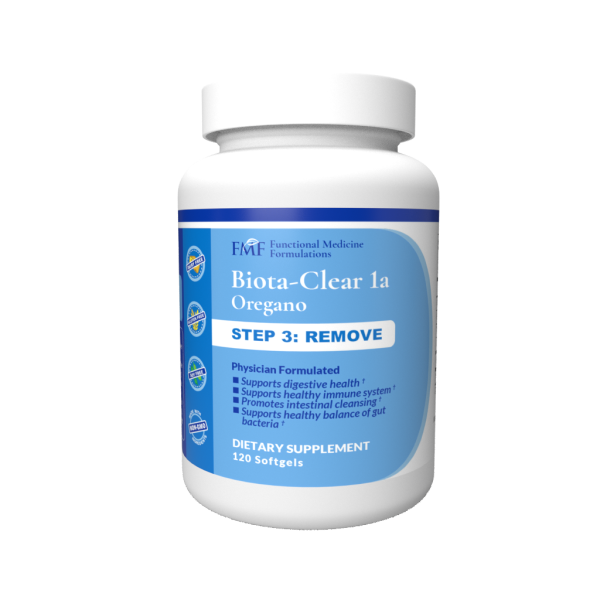
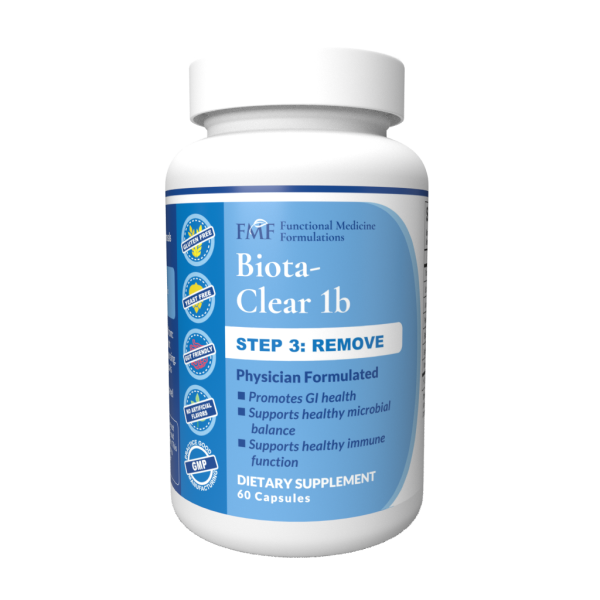
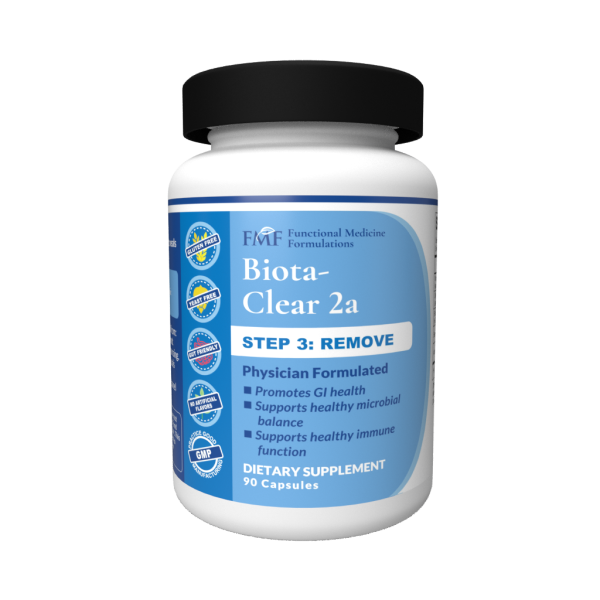
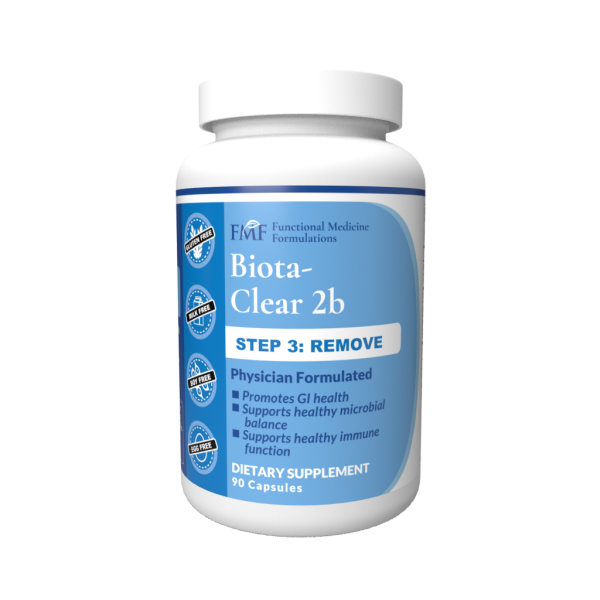



Discussion
I care about answering your questions and sharing my knowledge with you. Leave a comment or connect with me on social media asking any health question you may have and I just might incorporate it into our next listener questions podcast episode just for you!